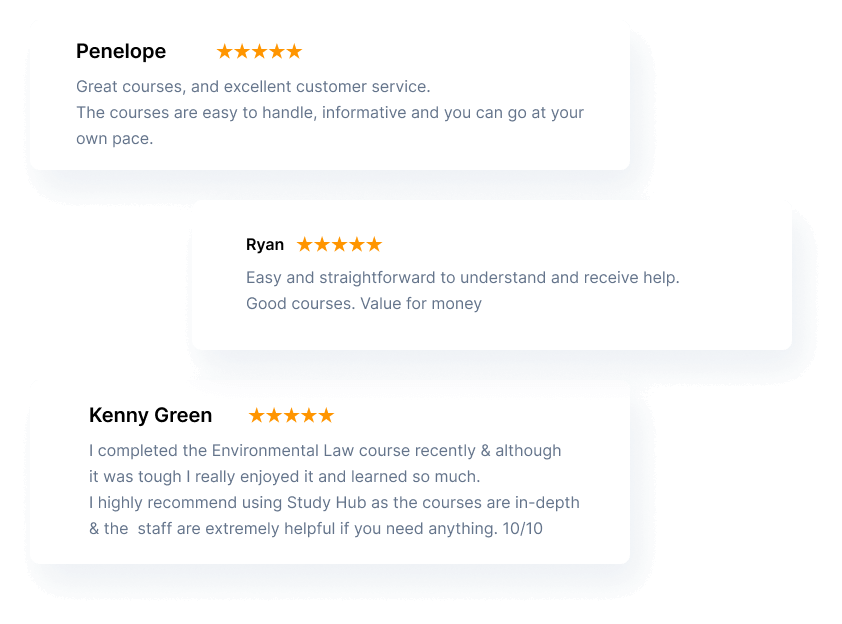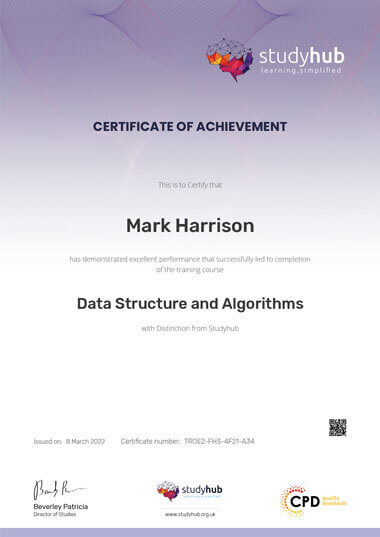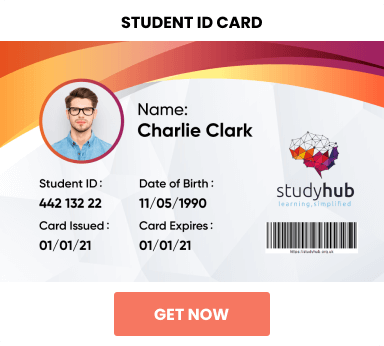
- Home
- Course
- Personal Development
- IT & Software
- Web Development
- U&P AI - Natural Language Processing (NLP) with Python
U&P AI - Natural Language Processing (NLP) with Python
Kickstart your career & boost your employability by helping you discover your skills, talents and interests with our special U&P AI – Natural Language Processing (NLP) with Python Course. You’ll create a pathway to your ideal job as this course is designed to uplift your career in the relevant industry. It provides professional training that employers are looking for in today’s workplaces.The U&P AI – Natural Language Processing (NLP) with Python Course is one of the most prestigious training offered at StudyHub and is highly valued by employers for good reason. This has been designed by industry experts to provide our learners with the best learning experience possible to increase their understanding of their chosen field. This U&P AI – Natural Language Processing (NLP) with Python Course , like every one of Study Hub’s courses, is meticulously developed and well researched. Every one of the topics is divided into elementary modules, allowing our students to grasp each lesson quickly.
Whether you’re aiming to understand what drives intelligent systems or laying the groundwork for future advancement in language-based AI technologies, U&P AI – Natural Language Processing (NLP) provides the conceptual tools to guide your journey. With an academic lens and logic-driven structure, the course helps you grasp what happens beneath the surface of NLP algorithms without relying on software-based applications or practical exercises. This course is ideal for learners who are seeking structured theoretical knowledge of how machines decode human language and make sense of it—one layer at a time.
Learning Outcomes
-
Understand foundational NLP concepts and their significance
-
Learn the theory behind feature extraction from text
-
Explore vocabulary creation and its importance in NLP
-
Examine corpus and WordNet for lexical relationships
-
Gain conceptual clarity on Word2Vec and its workings
-
Study methods for extracting meaning and topics from text
Why buy this U&P AI – Natural Language Processing (NLP) with Python Course ?
- Unlimited access to the course for forever
- Digital Certificate, Transcript, student ID all included in the price
- Absolutely no hidden fees
- Directly receive CPD accredited qualifications after course completion
- Receive one to one assistance on every weekday from professionals
- Immediately receive the PDF certificate after passing
- Receive the original copies of your certificate and transcript on the next working day
- Easily learn the skills and knowledge from the comfort of your home.
Certification
After studying the course materials of the U&P AI – Natural Language Processing (NLP) with Python Course there will be a written assignment test which you can take either during or at the end of the course. After successfully passing the test you will be able to claim the pdf certificate for £4.99. Original Hard Copy certificates need to be ordered at an additional cost of £8.
Who Is This Course For
-
Learners curious about how language is processed by machines
-
Students of AI seeking structured NLP theory
-
Enthusiasts of computational linguistics
-
Researchers focusing on language and AI intersections
-
Python users exploring NLP concepts
-
Anyone interested in the theory behind language technologies
Prerequisites
This U&P AI – Natural Language Processing (NLP) with Python Course does not require you to have any prior qualifications or experience. You can just enrol and start learning. This U&P AI – Natural Language Processing (NLP) with Python Course was made by professionals and it is compatible with all PC’s, Mac’s, tablets and smartphones. You will be able to access the course from anywhere at any time as long as you have a good enough internet connection.
Career Path
This course opens doors to various roles in this sector, including:
-
NLP Engineer: £45,000 to £80,000 per year
-
Machine Learning Engineer: £50,000 to £90,000 per year
-
Data Scientist: £40,000 to £75,000 per year
-
AI Researcher: £50,000 to £85,000 per year
-
Chatbot Developer: £30,000 to £55,000 per year
Course Curriculum
| Unit 01: Getting an Idea of NLP and its Applications | |||
| Module 01: Introduction to NLP | 00:03:00 | ||
| Module 02: By the End of This Section | 00:01:00 | ||
| Module 03: Installation | 00:03:00 | ||
| Module 04: Tips | 00:01:00 | ||
| Module 05: U – Tokenization | 00:01:00 | ||
| Module 06: P – Tokenization | 00:02:00 | ||
| Module 07: U – Stemming | 00:02:00 | ||
| Module 08: P – Stemming | 00:05:00 | ||
| Module 09: U – Lemmatization | 00:02:00 | ||
| Module 10: P – Lemmatization | 00:03:00 | ||
| Module 11: U – Chunks | 00:02:00 | ||
| Module 12: P – Chunks | 00:05:00 | ||
| Module 13: U – Bag of Words | 00:04:00 | ||
| Module 14: P – Bag of Words | 00:04:00 | ||
| Module 15: U – Category Predictor | 00:05:00 | ||
| Module 16: P – Category Predictor | 00:06:00 | ||
| Module 17: U – Gender Identifier | 00:01:00 | ||
| Module 18: P – Gender Identifier | 00:08:00 | ||
| Module 19: U – Sentiment Analyzer | 00:02:00 | ||
| Module 20: P – Sentiment Analyzer | 00:07:00 | ||
| Module 21: U – Topic Modeling | 00:03:00 | ||
| Module 22: P – Topic Modeling | 00:06:00 | ||
| Module 23: Summary | 00:01:00 | ||
| Unit 02: Feature Engineering | |||
| Module 01: Introduction | 00:02:00 | ||
| Module 02: One Hot Encoding | 00:03:00 | ||
| Module 03: Count Vectorizer | 00:04:00 | ||
| Module 04: N-grams | 00:04:00 | ||
| Module 05: Hash Vectorizing | 00:02:00 | ||
| Module 06: Word Embedding | 00:11:00 | ||
| Module 07: FastText | 00:04:00 | ||
| Unit 03: Dealing with corpus and WordNet | |||
| Module 01: Introduction | 00:01:00 | ||
| Module 02: In-built corpora | 00:06:00 | ||
| Module 03: External Corpora | 00:08:00 | ||
| Module 04: Corpuses & Frequency Distribution | 00:07:00 | ||
| Module 05: Frequency Distribution | 00:06:00 | ||
| Module 06: WordNet | 00:06:00 | ||
| Module 07: Wordnet with Hyponyms and Hypernyms | 00:07:00 | ||
| Module 08: The Average according to WordNet | 00:07:00 | ||
| Unit 04: Create your Vocabulary for any NLP Model | |||
| Module 01: Introduction and Challenges | 00:08:00 | ||
| Module 02: Building your Vocabulary Part-01 | 00:02:00 | ||
| Module 03: Building your Vocabulary Part-02 | 00:03:00 | ||
| Module 04: Building your Vocabulary Part-03 | 00:07:00 | ||
| Module 05: Building your Vocabulary Part-04 | 00:12:00 | ||
| Module 06: Building your Vocabulary Part-05 | 00:06:00 | ||
| Module 08: Similarity using Dot Product | 00:03:00 | ||
| Module 09: Reducing Dimensions of your Vocabulary using token improvement | 00:02:00 | ||
| Module 10: Reducing Dimensions of your Vocabulary using n-grams | 00:10:00 | ||
| Module 11: Reducing Dimensions of your Vocabulary using normalizing | 00:10:00 | ||
| Module 12: Reducing Dimensions of your Vocabulary using case normalization | 00:05:00 | ||
| Module 13: When to use stemming and lemmatization? | 00:04:00 | ||
| Module 14: Sentiment Analysis Overview | 00:05:00 | ||
| Module 15: Two approaches for sentiment analysis | 00:03:00 | ||
| Module 16: Sentiment Analysis using rule-based | 00:05:00 | ||
| Module 17: Sentiment Analysis using machine learning – 1 | 00:10:00 | ||
| Module 18: Sentiment Analysis using machine learning – 2 | 00:04:00 | ||
| Module 19: Summary | 00:01:00 | ||
| Unit 05: Word2Vec in Detail and what is going on under the hood | |||
| Module 01: Introduction | 00:04:00 | ||
| Module 02: Bag of words in detail | 00:14:00 | ||
| Module 03: Vectorizing | 00:08:00 | ||
| Module 04: Vectorizing and Cosine Similarity | 00:10:00 | ||
| Module 05: Topic modeling in Detail | 00:17:00 | ||
| Module 06: Make your Vectors will more reflect the Meaning, or Topic, of the Document | 00:10:00 | ||
| Module 07: Sklearn in a short way | 00:03:00 | ||
| Module 08: Summary | 00:02:00 | ||
| Unit 06: Find and Represent the Meaning or Topic of Natural Language Text | |||
| Module 01: Keyword Search VS Semantic Search | 00:04:00 | ||
| Module 02: Problems in TI-IDF leads to Semantic Search | 00:10:00 | ||
| Module 03: Transform TF-IDF Vectors to Topic Vectors under the hood | 00:11:00 | ||


Related Courses
Overview Master the language of business decisions with this Managerial Accounting Masterclass — a deep dive into how financial information …
1
Overview of Business Analysis Step into the analytical heart of modern business with our Diploma in Business Analysis — a …
1
Overview Accounting isn’t standing still—it’s being rewritten. Changes in Accounting have reshaped how today’s CFOs lead, forecast, and secure financial …
1
Grab This Course for
$557.70 Original price was: $557.70.$26Current price is: $26. ex Vat
-
 Level: Intermediate
Level: Intermediate
-
 Duration: 5 hours, 48 minutes
Duration: 5 hours, 48 minutes -
 Students: 0
Students: 0
.png)











